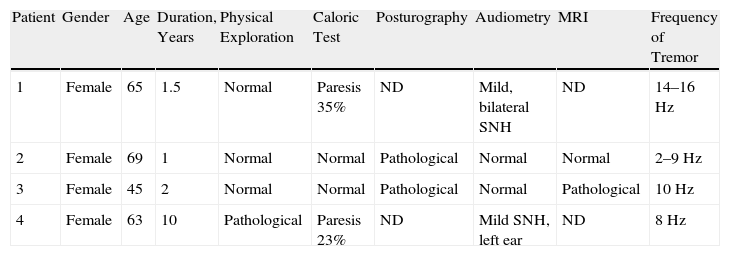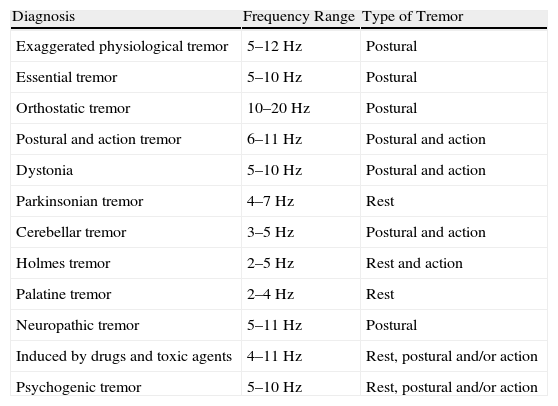Orthostatic tremor (OT) is a neurological disease of unknown aetiology. It is defined by the presence of a 10–20Hz tremor in the legs while standing still. Symptoms described are dizziness and instability that diminish if the patient sits down or leans on something; drinking small amounts of alcohol significantly reduces OT. Due to the dizziness and/or unsteadiness, these patients are usually referred to the neuro-otology department. We report 4 cases diagnosed with OT. The diagnosis of OT should be considered for patients with instability. The clinical history is a key factor to suspect this entity, and the diagnosis is given by the register of 10–20Hz contractions on limb electromyography. Treatment for this disease consists of medical treatment; the first option is clonazepam.
El temblor ortostático (TO) es una enfermedad neurológica de origen desconocido caracterizada por un temblor de 10-20Hz en las piernas en bipedestación. Se manifiesta por mareo e inestabilidad, que típicamente mejoran al apoyarse o sentarse y la ingesta de pequeñas cantidades de alcohol lo reduce de manera significativa. Se muestran 4 casos clínicos atendidos en nuestra consulta cuyo diagnóstico sugiere ser el de TO. Consideramos que ante un paciente con inestabilidad, es preciso plantearse como diagnóstico diferencial un TO. La historia clínica nos orienta hacia esta entidad y en caso de sospecha, el diagnóstico definitivo viene dado por el registro de la electromiografía en las extremidades inferiores en condición de reposo sentado y en ortostatismo donde se registra un temblor de 10-20Hz. El tratamiento es médico y, se emplea el clonazepam como primera opción terapéutica.
Artículo
Comprando el artículo el PDF del mismo podrá ser descargado
Precio 19,34 €
Comprar ahora








